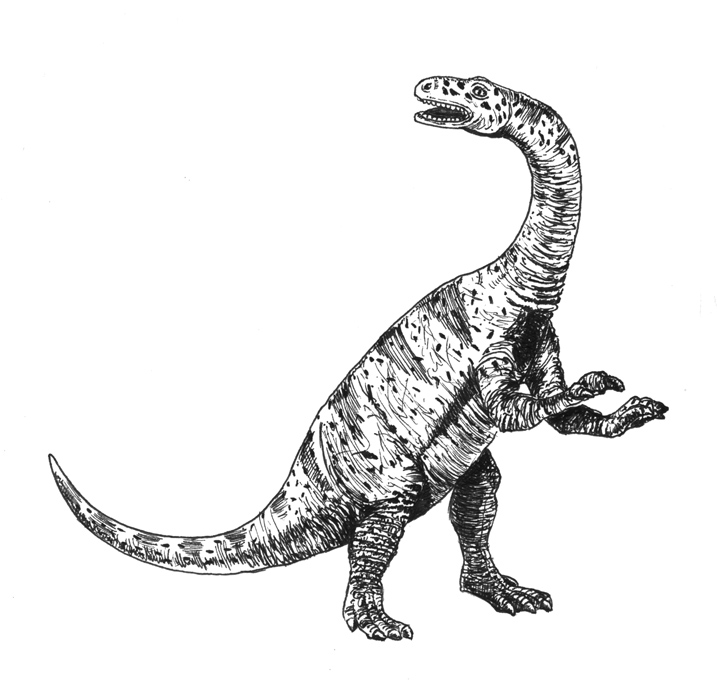Early Jurassic Dinosaur Found on Antarctic Mountainside
Scientists from the Field Museum in Chicago in co-operation with palaeontologists from Argentina (Museo Paleontologico – Chubut); have named and described a new genus and species of dinosaur that once roamed the Antarctic portion of Gondwanaland 190 million years ago.
Dinosaurs from the Antarctic
The animal was a sauropodomorph, an early long-necked dinosaur, although only partial remains were excavated (a femur and an incomplete ankle plus some foot bones); scientists estimate that this animal was 8 metres long and weighed 4 tonnes. It has been named Glacialisaurus hammeri (Hammer’s glacial lizard), in honour of Dr William Hammer who led the expedition. This team’s paper on this new dinosaur has been published in the scientific journal Acta Palaeontologica Polonica. The fossils were found at Mount Kirkpatrick near the Beardmore glacier, extracting them in the extreme cold proved very difficult but the site has yielded more evidence of the climate in the region during this time. A second more advanced, true sauropod skeleton has been found nearby, it is hoped that these two discoveries will help palaeontologists understand the ecosystem that existed in this near polar environment. Both fossil sites are at elevations that exceed 10,000 feet, making excavation extremely difficult.
An Illustration of a Typical Sauropodomorph
Picture credit: Everything Dinosaur
During the Early Jurassic, Antarctica was connected to the other southern land masses. It was situated further north, having yet to settle over the south pole. The region served as an important prehistoric animal highway, permitting animals to travel from Australia to South America across this huge land mass. Although the area was not as cold as Antarctica is today, dinosaurs would have had to endure a period of darkness during the Southern Hemisphere winter and the climate would have been much harsher than further north.
Polar Dinosaurs
A large body mass would have been helpful in cold climate. Although it would have taken longer to warm up, the large body would have lost body heat slower than smaller creatures around at the time. Perhaps these animals migrated south feeding on the lush growth that would have been permitted in the short season when there was maximum daylight, it is unknown whether this species was a migrant or a permanent resident of this environment. The single skeleton provides no evidence of herd behaviour which is what would have been expected had the animal migrated south to feed. This behaviour is usually seen in herding animals, who gather together on the move to protect themselves from predators.
Determining the Diet
The diet of this animal has yet to be determined. The lack of skull material makes this difficult. Other animals of similar size, for example, the prosauropod Massopondylus, had an enlarged thumb claw, an upper jaw that stuck out and a variety of teeth types within the jaws. Some palaeontologists claim that this evidence indicates that this animal was a carnivore, certainly the lizard-hipped dinosaurs gave rise to the great carnivorous lineages of dinosaurs, but perhaps Glacialisaurus was an omnivore, eating plants and supplementing this diet by catching smaller creatures.
To view models of sauropodomorphs and polar dinosaurs: Dinosaur and Prehistoric Animal Models.







Leave A Comment